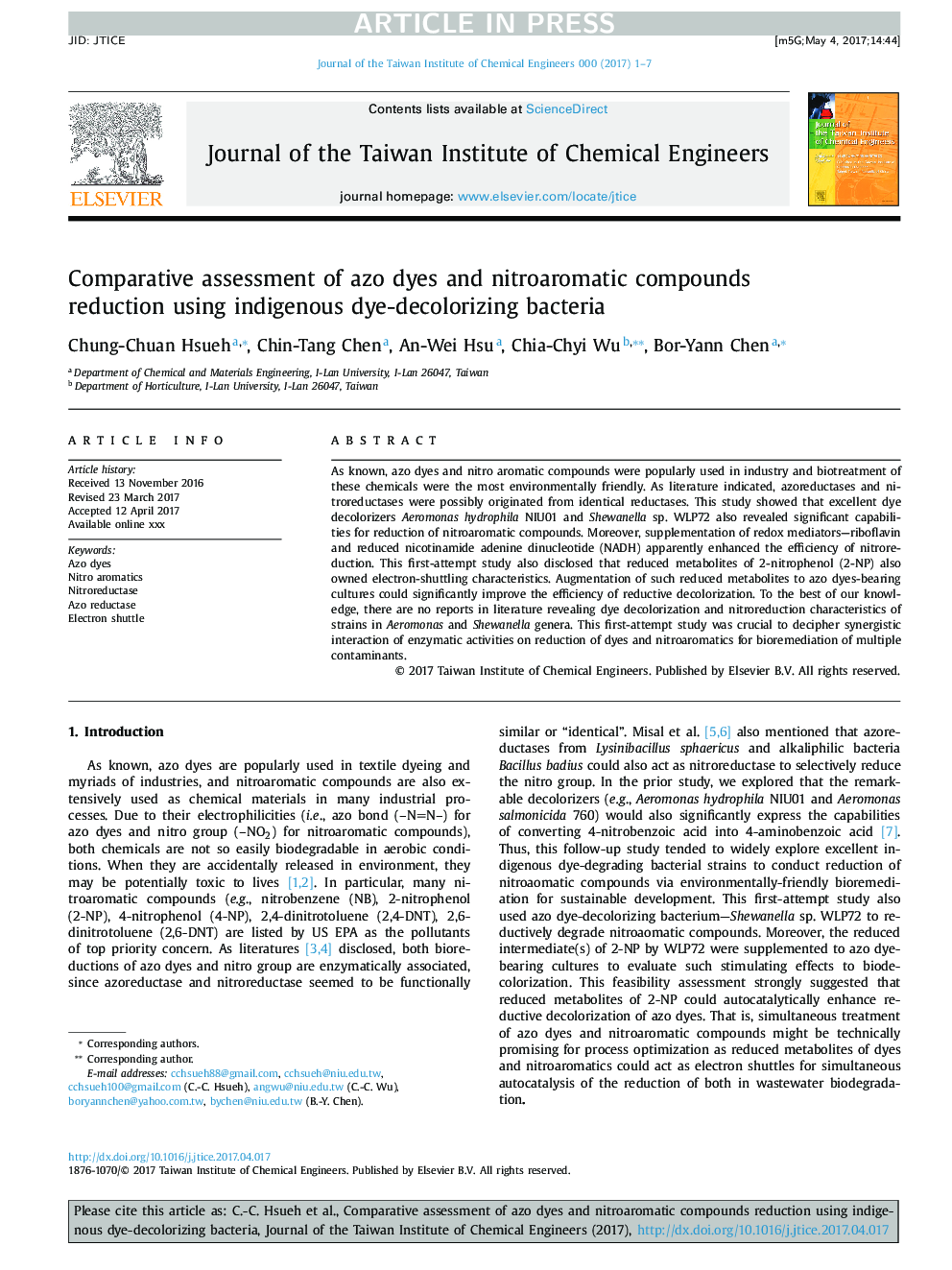| Article ID | Journal | Published Year | Pages | File Type |
|---|---|---|---|---|
| 4998548 | Journal of the Taiwan Institute of Chemical Engineers | 2017 | 7 Pages |
Abstract
As known, azo dyes and nitro aromatic compounds were popularly used in industry and biotreatment of these chemicals were the most environmentally friendly. As literature indicated, azoreductases and nitroreductases were possibly originated from identical reductases. This study showed that excellent dye decolorizers Aeromonas hydrophila NIU01 and Shewanella sp. WLP72 also revealed significant capabilities for reduction of nitroaromatic compounds. Moreover, supplementation of redox mediators-riboflavin and reduced nicotinamide adenine dinucleotide (NADH) apparently enhanced the efficiency of nitroreduction. This first-attempt study also disclosed that reduced metabolites of 2-nitrophenol (2-NP) also owned electron-shuttling characteristics. Augmentation of such reduced metabolites to azo dyes-bearing cultures could significantly improve the efficiency of reductive decolorization. To the best of our knowledge, there are no reports in literature revealing dye decolorization and nitroreduction characteristics of strains in Aeromonas and Shewanella genera. This first-attempt study was crucial to decipher synergistic interaction of enzymatic activities on reduction of dyes and nitroaromatics for bioremediation of multiple contaminants.
Related Topics
Physical Sciences and Engineering
Chemical Engineering
Process Chemistry and Technology
Authors
Chung-Chuan Hsueh, Chin-Tang Chen, An-Wei Hsu, Chia-Chyi Wu, Bor-Yann Chen,
